CPS Unit Number 043-02
Camp: 43
Unit ID: 2
Title: Aibonito
Operating agency: MCC
Opened: 7 1943
Closed: 12 1946
Workers
Total number of workers who worked in this camp: 43
-
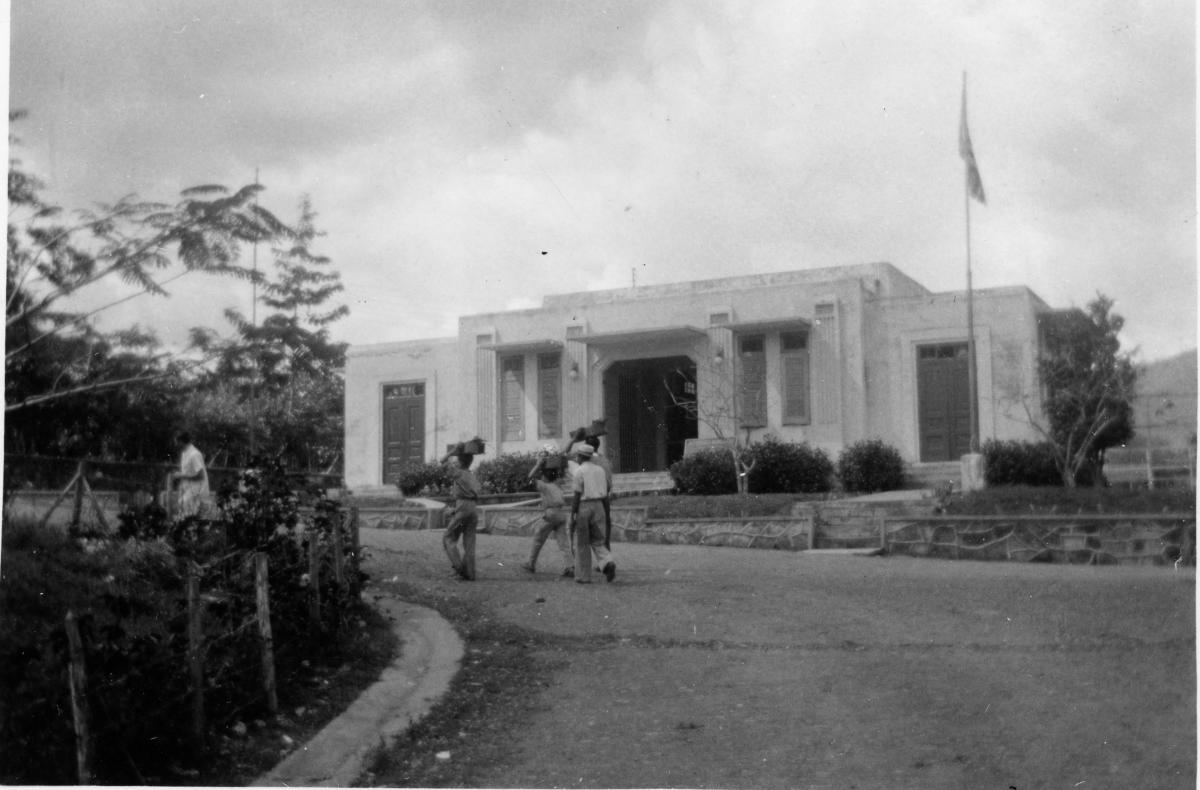 CPS Camp No. 43, Aibonito, Puerto RicoThe Community Center. The boxes being carried on the heads of the men are little caskets with the bodies of prematurely born triplets attended by Dr. PreheimDigital Image at Mennonite Church USA Archives, North Newton, Kansasca. 1943
CPS Camp No. 43, Aibonito, Puerto RicoThe Community Center. The boxes being carried on the heads of the men are little caskets with the bodies of prematurely born triplets attended by Dr. PreheimDigital Image at Mennonite Church USA Archives, North Newton, Kansasca. 1943 -
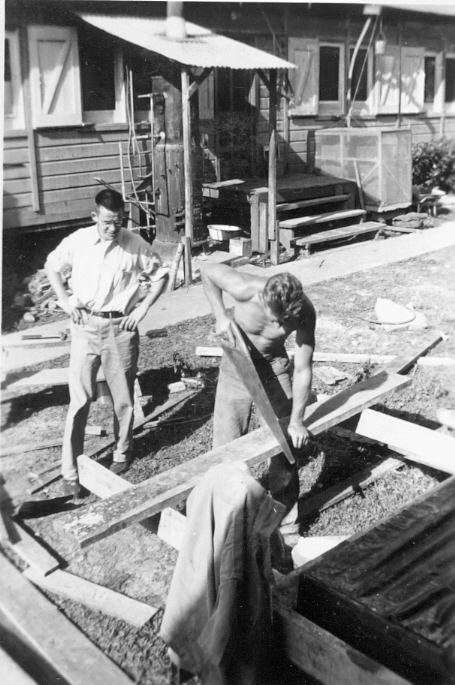 CPS Camp No. 43, subunit 1, Castñer Puerto RicoConstruction under way.Digital Image © 2011 Brethren Historical Library and Archives. All Rights Reserved.
CPS Camp No. 43, subunit 1, Castñer Puerto RicoConstruction under way.Digital Image © 2011 Brethren Historical Library and Archives. All Rights Reserved. -
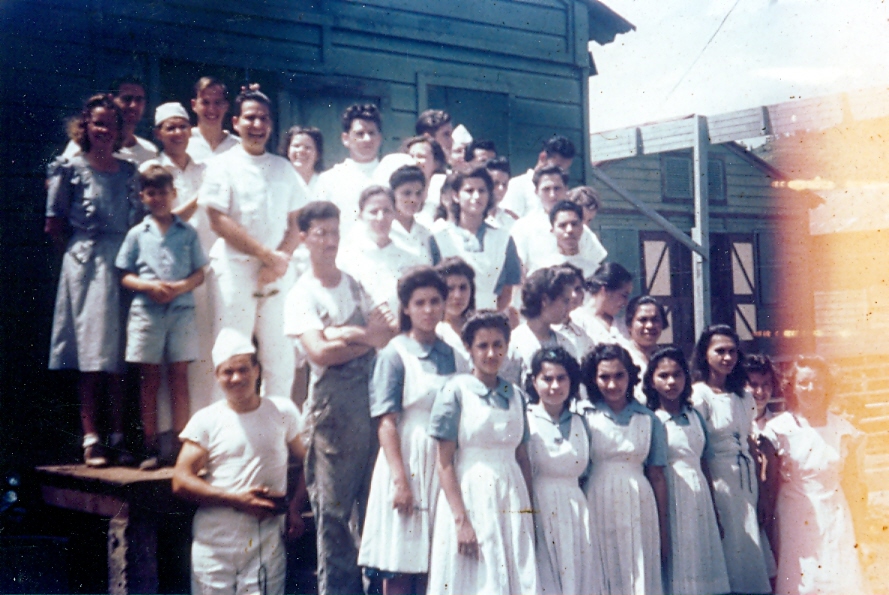 CPS Camp No. 43, subunit 1, Castñer Puerto RicoDan Boehm's picture of most pf the medical staff or related (kitchen, housekeeping, etc.); on front end of hospital.Digital Image © 2011 Brethren Historical Library and Archives. All Rights Reserved.
CPS Camp No. 43, subunit 1, Castñer Puerto RicoDan Boehm's picture of most pf the medical staff or related (kitchen, housekeeping, etc.); on front end of hospital.Digital Image © 2011 Brethren Historical Library and Archives. All Rights Reserved. -
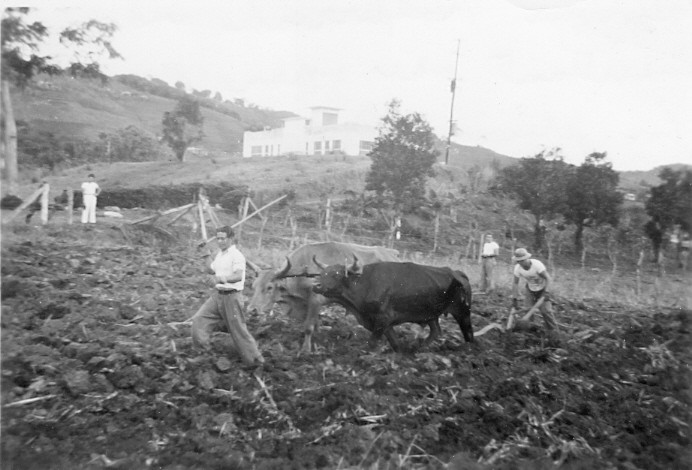 CPS Camp No. 43, subunit 1, Castñer Puerto RicoWilbur Holderread and assistant use oxen power for plowing.Digital Image © 2011 Brethren Historical Library and Archives. All Rights Reserved.
CPS Camp No. 43, subunit 1, Castñer Puerto RicoWilbur Holderread and assistant use oxen power for plowing.Digital Image © 2011 Brethren Historical Library and Archives. All Rights Reserved. -
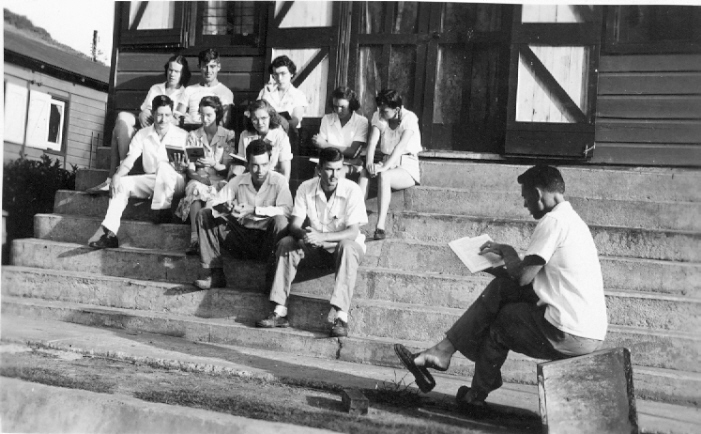 CPS Camp No. 43, subunit 1, Castñer Puerto RicoSpanish class.Digital Image © 2011 Brethren Historical Library and Archives. All Rights Reserved.
CPS Camp No. 43, subunit 1, Castñer Puerto RicoSpanish class.Digital Image © 2011 Brethren Historical Library and Archives. All Rights Reserved. -
 CPS Camp No. 43, subunit 4, St. Thomas Virgin IslandsBlackbeards CPS Unit Quarters. From the J. Henry Dasenbrock CollectionDigital Image Brethren Historical Library and Archives. All Rights Reserved
CPS Camp No. 43, subunit 4, St. Thomas Virgin IslandsBlackbeards CPS Unit Quarters. From the J. Henry Dasenbrock CollectionDigital Image Brethren Historical Library and Archives. All Rights Reserved -
 CPS Camp No. 43, subunit 2, Aibonito, Puerto RicoAibonito, Puerto Rico, camp 43.Box 1, Folder 24. MCC Photographs, Civilian Public Service, 1941-1947. IX-13-2.2. Mennonite Central Committee Photo Archive
CPS Camp No. 43, subunit 2, Aibonito, Puerto RicoAibonito, Puerto Rico, camp 43.Box 1, Folder 24. MCC Photographs, Civilian Public Service, 1941-1947. IX-13-2.2. Mennonite Central Committee Photo Archive -
 CPS Camp No. 43, subunit 2, Aibonito, Puerto RicoAibonito, Puerto Rico, camp 43. The inaugeration crowd at the front of the hospital for the official opening after the dedication address delivered by Dr. Hiebert in the community center.Box 1, Folder 24. MCC Photographs, Civilian Public Service, 1941-1947. IX-13-2.2. Mennonite Central Committee Photo Archive
CPS Camp No. 43, subunit 2, Aibonito, Puerto RicoAibonito, Puerto Rico, camp 43. The inaugeration crowd at the front of the hospital for the official opening after the dedication address delivered by Dr. Hiebert in the community center.Box 1, Folder 24. MCC Photographs, Civilian Public Service, 1941-1947. IX-13-2.2. Mennonite Central Committee Photo Archive -
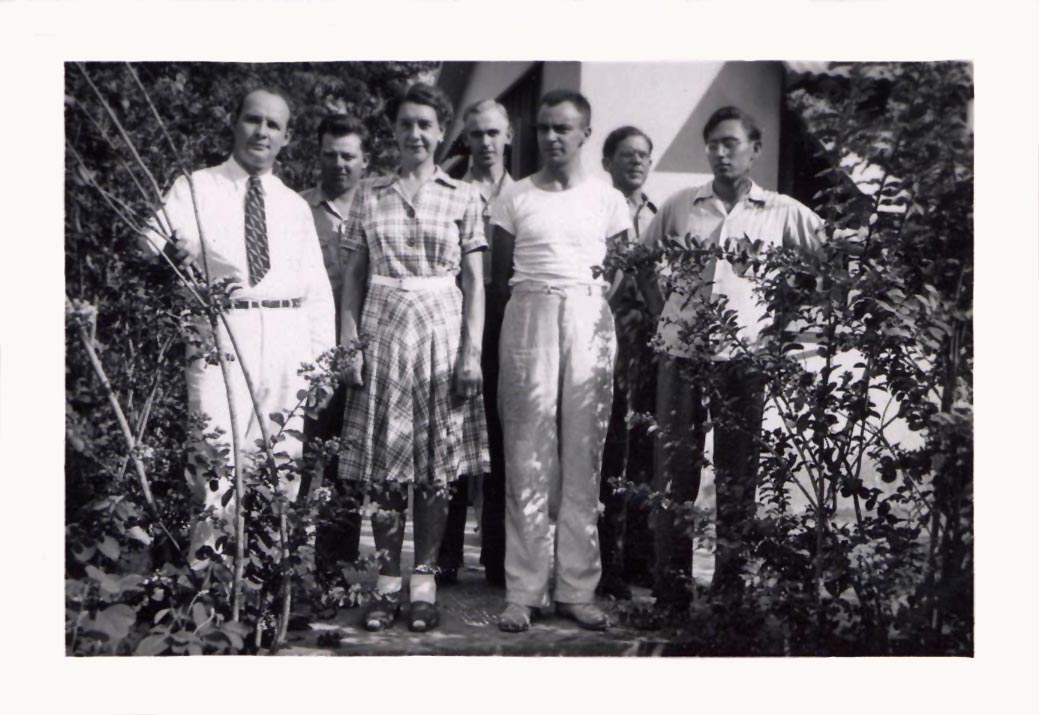 CPS Camp No. 43, subunit 1, Castñer Puerto RicoLate August, 1943
CPS Camp No. 43, subunit 1, Castñer Puerto RicoLate August, 1943 -
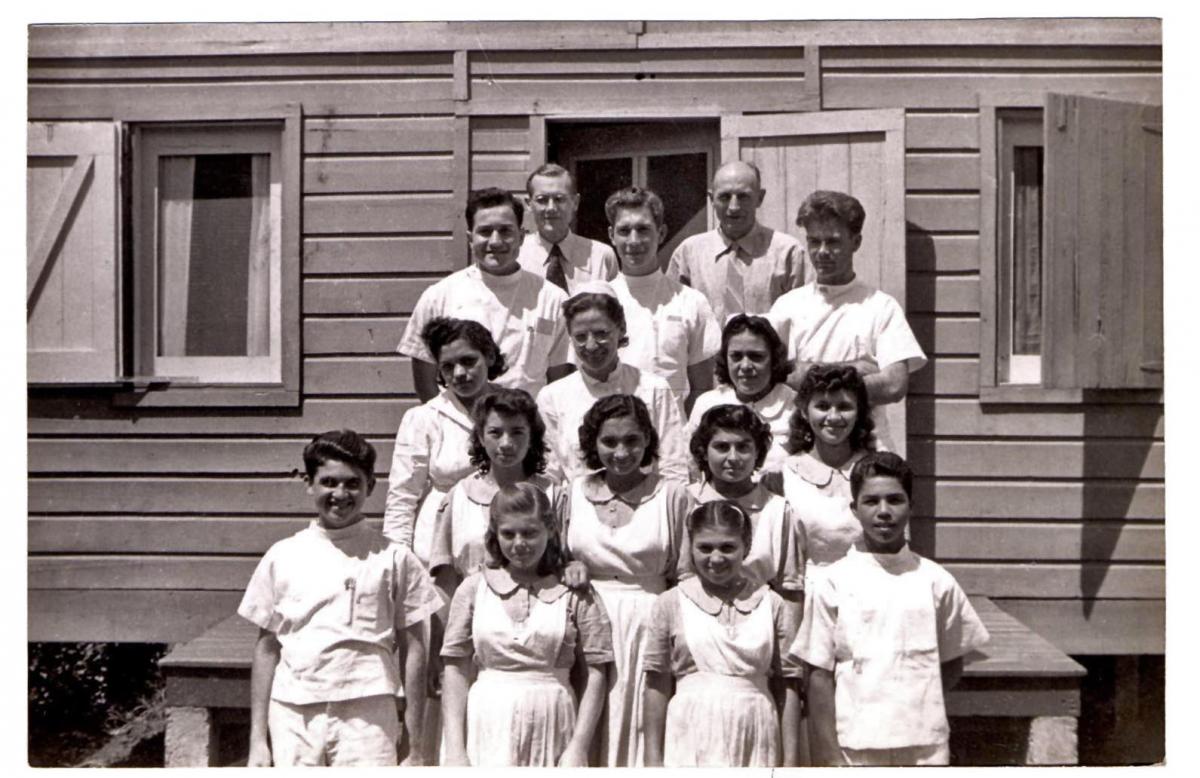 CPS Camp No. 43, subunit 1, Castñer Puerto RicoPuerto Rico
CPS Camp No. 43, subunit 1, Castñer Puerto RicoPuerto Rico -
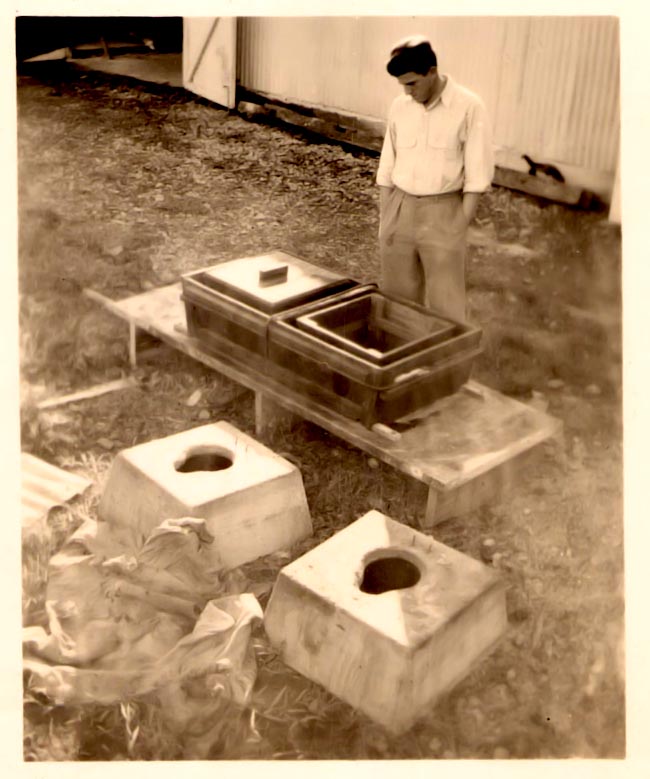 CPS Camp No. 43, subunit 1, Castñer Puerto RicoSan Just, Puerto Rico. Chris Ahrens looking at parts of privy constructionMay 29, 1945
CPS Camp No. 43, subunit 1, Castñer Puerto RicoSan Just, Puerto Rico. Chris Ahrens looking at parts of privy constructionMay 29, 1945
-
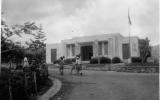 ca. 1943
ca. 1943 -
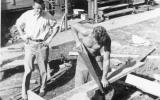
-

-
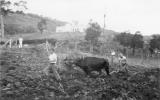
-
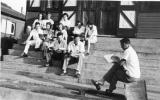
-

-
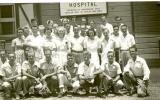
-
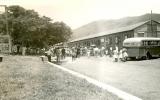
-
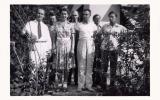
-

-
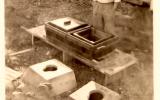 May 29, 1945
May 29, 1945
CPS Camp No. 43 Subunit 2, called the La Plata Project, a rural settlement built around a community center not far from Aibonito, Puerto Rico, was operated by the Mennonite Central Committee in cooperation with the Brethren Service Committee. It opened in July 1943 and closed as a CPS unit in December 1946. The men constructed a small hospital, developed a community center and operated programs in both.
See description of the relationship of this subunit to the full Castañer project by clicking on CPS Camp No. 43-01.
Mennonite Central Committee had been following the Brethren exploration for work in Puerto Rico, providing both financial support and some personnel. When invited in early 1943 by the Brethren to set up a MCC unit, the MCC Executive Committee approved a unit that would relate to the Brethren Service Committee in the same way the Brethren had related to MCC at CPS Camp No. 24 in Hagerstown, Maryland. The Brethren took the first steps on the La Plata project before MCC personnel arrived in July. La Plata, a rural settlement, was built around a community center in south central Puerto Rico.
Directors: Wilbur Nachtigall, Harry Martens, Melvin Lauver
Camp Matron: May Anne Goering Preheim
Nurse: Grace Kauffman
Director Nachtigall, Justis Holsinger and Erwin Schrag arrived first. Three men from Goshen College who had received foreign relief training joined in September—James Hean, Carl M. Lehman and Carl Epp. Dr. Delbert Preheim and his wife Mary Ann arrived to serve as medical director and matron for the unit. N. Paul Stucky, Erwin Warkentin, Elmer Gingerich and Roman Gingerich arrived in December. The unit grew to twenty-five by August 1944.
Dr. H. Clair Amstutz, who took leave from Goshen College to serve on the project, after returning to Goshen, “appeared before a congressional committee on Selective Service in Washington D. C. to plead for the inclusion of medical doctors if they sought status as conscientious objectors. His testimony was successful with the committee acknowledging the omission as an oversight.” (Florence Badertscher Amstutz, in “Detour . . . Main Highway”: Our CPS Stories, pp. 83-84)
During 1945, the unit consisted not only of the CPS men, but also nineteen workers from continental U.S. and twenty Puerto Ricans. By December 1946, of the forty-two US workers, only five were drafted men, as demobilization had resulted in the release of most of the men. Twenty Puerto Ricans continued to be employed in the work begun by CPS.
Religious composition in Mennonite camps tended to be the most homogeneous, partly because the largest number of COs in World War II came from Mennonite groups, sometimes forming as much as ninety percent of a project. Many came from rural farming communities in Kansas, Pennsylvania, Ohio and Indiana. Men in Mennonite projects brought an average of 10.45 years of education as compared to 9.4 and 9.3 years for enlisted men in the Army and Navy. Twelve percent of Mennonite draftees entered CPS from technical or professional occupations while fifty-nine percent entered from farming and other agricultural jobs. (Sibley and Jacob pp. 170-72)
The men undertook two types of work—medical services and community building. The medical clinic opened in December 1943. Men built a twenty-four bed hospital out of a tobacco barn in three months, constructing many of the furnishings so that it opened August 13, 1944. By the end of the month Dr. and Mrs. Earl Stover arrived to establish dental services.
Soon thereafter Dr. H. Clair Amstutz joined the medical staff and a fifth nurse arrived. Still later, Dr. and Mrs. George Troyer arrived to help staff the medical unit. By February 1945, the hospital staff numbered sixteen. They operated two general clinics as well as clinics for tuberculosis, pediatrics, obstetrics, and venereal disease. In addition, the unit serviced clinics in four outlying districts. The staff also offered a three months’ training program for local young women to become nurses’ aides.
“One of the outstanding achievements at La Plata in the mid 1940s was the discovery of the widespread tuberculosis present through the use of X-Ray and laboratory tests. This was news to medical authorities in San Juan where the majority of the populace was in better circumstances. A second achievement was the development of public medical clinics for rural residents.” (Florence Badertscher Amstutz, in “Detour . . . Main Highway”: Our CPS Stories, p. 82)
When Ozzie Goering arrived, he was offered three job possibilities—cook, running the laundry, or working as a mechanic. “None of these seemed to interest me so I finally chose the laundry. The first weekend before I started work was a sad time for me.” On Monday, matters changed, as the director had read a letter from Roman Gingerich, Ozzie’s CPS camp director at Mulberry.
On Monday morning he called me into his office and asked if I would be interested in running the recreation program, teach phys ed. in the local junior high schools and coach the sports teams. What a relief that was to me. Never in my life since then or before did I put in as long a day working as I did there. I left for the school at eight o’clock in the morning and then had the recreation program for the community people until about nine o’clock in the evening. Having had an athletic background in high school and college this assignment was a real joy.
This was probably the happiest period of my life as well as the busiest. If the Mennonite Central Committee had offered me a contract to work with them for the rest of my life without pay, I probably would have signed it. Certainly the impact that this service project had on me influenced my interest in service projects for the rest of my life. (The Eden Peace Witness: A Collection of Personal Accounts pp. 101-102)
In community building, the unit emphasized agricultural education, recreation and community relief. The unit cooperated with already established 4-H clubs and later began a dairy herd. Men provided leadership in an organized sports program for both young and old and extended this service in near-by centers. This expanded to instruction in health and physical education in the schools and a boy’s summer camp. The community sanitation program included conducting surveys, showing health films and constructing sanitary latrines.
As part of the relief program for families, the La Plata center operated a milk station, provided hot breakfasts for children and distributed clothing. Staff later offered community nutrition demonstrations as a component of the milk station.
One CPS man Robert Ehert, a licensed embalmer, started a mortuary service in 1945 and it continued after his demobilization. The men erected a chicken barn and started an orchard. During 1944-45, two CPS wives, Margaret Weaver and Myrtle Buller taught school-- Margaret in the La Plata public school and Myrtle along with Carol Glick in the Baptist Academy in Barranquintas. The following year, Mr. and Mrs. Stanley Miller began teaching in the Baptist Academy and stayed on after demobilization.
When requests came from local residents for a church building, the PRRA suggested that the Mennonites might want to consider a more permanent relationship. Since “organized religious worship cannot be conducted in a government building” (Gingerich, p. 267) MCC relief suggested to the MCC Executive Committee that the unit build a chapel. Construction began in November 1945 and the chapel was dedicated March 17, 1946. This and the development of a Mennonite missionary project in Pulguillas, a rural mountain area with medical, educational and economic development needs, led to establishing a mission in Puerto Rico that continued after the war.
N. Paul Stucky, described his experience at Aibonito. “It was a wonderful experience. I became a lab technician. . . . The people in the community were very cooperative. We learned another language and culture.” After discharge from CPS in December 1945, he returned for the summer of 1947 to serve with MCC, noting that “the single story wood hospital which we dedicated in CPS days was a good start.” (The Eden Peace Witness: A Collection of Personal Accounts, pp. 151-153)
The men published a camp paper Rio La Plata from November 1943 through March, 1947. The unit continued on after the end of CPS and the paper did as well. In September 1945, the men published one issue of La Busqueda.
For more information on the La Plata unit see Melvin Gingerich, Service for Peace: A History of Mennonite Civilian Service. Akron, PA: Mennonite Central Committee printed by Herald Press, Scottdale, PA 1949, pp. 263-70.
See also digital photo images of CPS and Voluntary Service work in Puerto Rico on the flikr website compiled by Tom Lehman at http://www.flickr.com/photos/tlehman Note the collections on Puerto Rico within the site: Puerto Rico, 1940s-1950s (81 sets, some by CPS workers); Old Puerto Rico Photos & Postcards (4 sets); Puerto Rico Black & White (1 set); Art Gallery (2 sets).
For more information on women COs see Rachel Waltner Goossen, Women Against the Good War: Conscientious Objection and Gender on the American Home Front, 1941-47. Chapel Hill, NC: The University of North Carolina Press, 1997.
See The Eden Peace Witness: A Collection of Personal Accounts edited by Jeffrey W. Koller. Moundridge, KS: Jebeko Publishing, 2004.
For personal stories of CPS men, see Peace Committee and Seniors for Peace Coordinating Committee of the College Mennonite Church of Goshen, Indiana, “Detour . . . Main Highway”: Our CPS Stories. Nappanee, IN: Evangel Press, 1995, 2000.
See also Mulford Q. Sibley and Philip E. Jacob, Conscription of Conscience: The American State and the Conscientious Objector, 1940-47. Ithaca, NY: Cornell University Press, 1952, pp. 141-143.
Swarthmore College Peace Collection, Camp periodicals database.